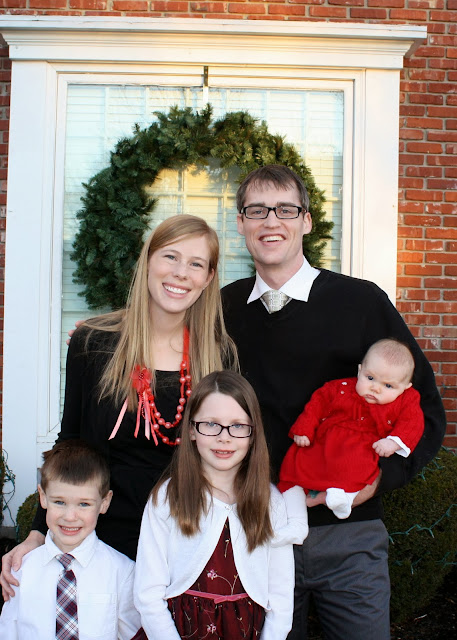Note: I'm currently reading Rob Bell's new and extremely popular book Love Wins
. I will be posting reviews on various sections of the book as I read them while giving a Catholic perspective to the questions he poses.
Other posts on Love Wins
:
Intro
Part 1--On Salvation
Part 3 -- On Hell
Chapter 2 is called
Here is the New There.
The key question in the chapter: Are there other ways to think about heaven, other than as that perfect floating city hanging suspended there in the air above that obvious red and black realm with all that smoke and steam and hissing fire?

Overall, I agree with most of this chapter (there are some minor things that I don't totally buy into to). Because of their significance, I will just review the areas of agreement with Catholicism.
Area of Agreement #1--Heaven on Earth
The overall thesis of this entire chapter is that ultimately heaven will be here on earth (as alluded to in the title). Bell uses many of the images from the prophets and teachings from Jesus about the age to come to show, "It's here they were talking about, this world, the one we know--but rescued, transformed and renewed."
"When we talk about heaven, then, or eternal life, or the afterlife--or any of that--it's important that we begin with the categories and claims that people were familiar with in Jesus' first-century Jewish world. They did not talk about a future life somewhere else, because they anticipated a coming day when the world would be restored, renewed, and redeemed and there would be peace on earth."
Bell notes Revelation 21, which is an image of the end of the world, and how "God's dwelling place is now among the people."
Heaven on earth is a very Catholic concept. Catholics believe that Jesus set up His kingdom here on earth. While still not heaven, the kingdom is an image of what is to come and we are supposed to be living out heaven on earth.
 Catechism of the Catholic Church
Catechism of the Catholic Church: "The Church is ultimately
one, holy, catholic, and apostolic in her deepest and ultimate identity, because it is in her that "the Kingdom of heaven," the "Reign of God,"
already exists and will be fulfilled at the end of time...Then all those he has redeemed and made "holy and blameless before him in love," will be gathered together as the one People of God, the "Bride of the Lamb," "the holy city Jerusalem coming down out of heaven from God, having the glory of God" (CCC 865).
Bell states that this perspective isn't just theoretical. It has huge implications for what we do here on earth. He observes, "It often appears that those who talk the most about going to heaven when you die talk the least about bringing heaven to earth right now, as Jesus taught us to pray: 'Your will be done on earth as it is in heaven.' At the same time, it often appears that those who talk the most about relieving suffering now talk the least about heaven when we die."
Is this why Catholic never talk about heaven? On a serious note, it does explain Catholics strong sense of social action. No other religious or non-religious organization does more humanitarian aid each year. We specifically take the earth seriously in our teachings as well. The Pope has put
solar panels on the Vatican and
purchased forest space in order to offset the Vatican's carbon footprint. Not to just be green, but to reflect Catholic teaching about an earthly heaven and a renewal of the earth.
Compare Bell's quote to the Catechism quote that follows: "A proper view of heaven leads not to escape from the world, but to full engagement with it, all with the anticipation of a coming day when things are on earth as they currently are in heaven."
 "Far from diminishing our concern to develop this earth, the expectancy of a new earth should spur us on, for it is here that the body of a new human family grows, foreshadowing in some way the age which is to come. That is why, although we must be careful to distinguish earthly progress clearly from the increase of the kingdom of Christ, such progress is of vital concern to the kingdom of God, insofar as it can contribute to the better ordering of human society" (CCC 1049)
Area of Agreement #2--Fire in Heaven (Purgatory?)
"Far from diminishing our concern to develop this earth, the expectancy of a new earth should spur us on, for it is here that the body of a new human family grows, foreshadowing in some way the age which is to come. That is why, although we must be careful to distinguish earthly progress clearly from the increase of the kingdom of Christ, such progress is of vital concern to the kingdom of God, insofar as it can contribute to the better ordering of human society" (CCC 1049)
Area of Agreement #2--Fire in Heaven (Purgatory?)
Rob brings up a passage in
1 Corinthians 3 about purification. To quote him directly, "(on the day that) inaugurates life in the age to come, will 'bring everything to light" and 'reveal it with fire,' the kind of fire that will 'test the quality of each person's work.' Some in this process will find that they spent their energies and efforts on things that won't be in heaven-on-earth. 'If it is burned up,' Paul writes, 'the builder will suffer loss but yet will be saved, even though only as one escaping through flames.' Flames in heaven."
To my enjoyment, Bell continues: "Much of the speculation about heaven--and, more important, the confusion--comes from the idea that in the blink of an eye we will automatically become totally different people who 'know' everything. But our heart, our character, our longings--those things take time."

All of what Rob is talking about here is exactly how a Catholic would about purgatory (Catholic confusion note: All those in purgatory go to heaven. It is a purification before the elect go to heaven.)
Catechism of Catholic Church: "All who die in God's grace and friendship, but still imperfectly purified, are indeed assured of their eternal salvation; but after death they undergo purification, so as to achieve the holiness necessary to enter the joy of heaven.
The Church gives the name
Purgatory to this final purification of the elect, which is entirely different from the punishment of the damned. The Church formulated her doctrine of faith on Purgatory especially at the Councils of Florence and Trent. The tradition of the Church, by reference to certain texts of Scripture, speaks of a cleansing fire..." (CCC 1030-1031).
Final thoughts:
Overall, I think Bell's thoughts on heaven stem from his view of salvation in chapter 1. Salvation is a process, not simply a prayer. This very much affects his purgatory like position. In addition, Bell's questioning of the Protestant tradition allows him to read the Bible outside of it. In doing so, he sees that Scripture paints a very different picture of heaven and in doing so radically changes how we act here on earth. To see all of these thoughts in one of the most popular Protestant books of the past 10 years is very encouraging.
In the end, Bell will basically transfer the idea of purgatory above to what hell is like. We will cover this next time.
Thoughts on this chapter or the book?
To close,
here is a Simpsons video on the differences between Protestant and Catholic heaven--definitely worth the watch--notice the earthiness of the Catholic heaven (although it still does involve clouds).
-
--
Other posts on Love Wins
:
Intro
Part 1--On Salvation
Part 3 -- On Hell

















































